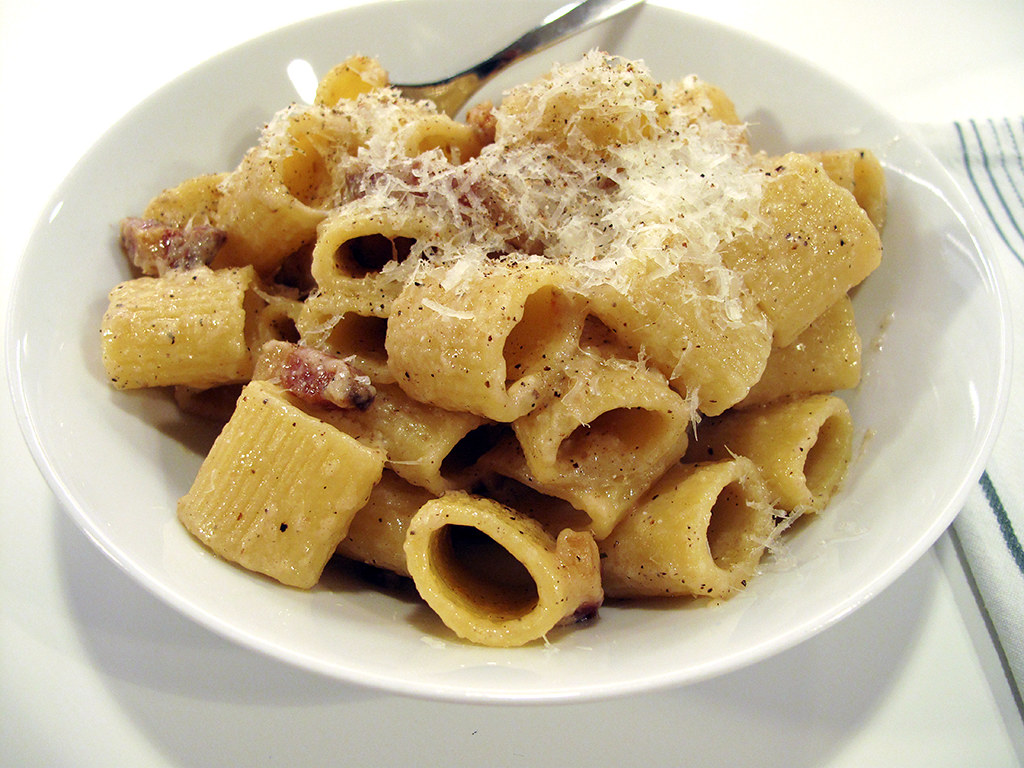Pasta alla Gricia

I love Rome. It's not just because it's the eternal city, that it's been represented in so many films and media, or because it's perennially a tourist favorite. I love Rome for it's food and because it was the first destination I visited after the pandemic and lockdown. It was so freeing to be able to travel again, and it was one of my first trips entirely alone. I ate so much food, so much pasta that first time, and ever since I've been discovering more and more about Rome's pasta tradition.
I've now been to Rome a total of four times. Every time I go, I somehow always end up being there on one of the hottest days of summer. And I'm OK with that. I'm even totally OK eating a hot plate of pasta in the middle of summer. I will sweat bullets over my pasta without any embarrassment. I've become a full-on convert when it comes to the four Roman pasta dishes.
I love my amatriciana and carbonara, of course, but I also love one of the simplest of them all, gricia. Pasta alla gricia is the predecessor to amatriciana and carbonara. If you were to add tomatoes to gricia, you'd get amatriciana. Or, if you would add egg yolks, you'd get carbonara. And then there's also cacio e pepe, which is the guanciale-less cousin of the other three. It's just pasta, pepper, and cheese. But for me the guanciale is king! This is why I gravitate toward pasta alla gricia.
It was just last August, exactly a year ago, that I first tried pasta alla gricia. I honestly don't know why I waited so long to have this simplest, purest of Roman pasta dishes. I can't forget the experience: I was sitting outside a cafe in Trastevere, and just as my plate of pasta alla gricia was brought out to me, the church bells started ringing. It was as if I had reached some climactic moment in a film, or maybe the angels were lauding my decision. From that moment on gricia and I were simpatico!
So, without further ado, here is my rendition of authentic pasta alla gricia. There are a few steps that you need to follow exactly. Even though this is a super simple dish, it's very easy to get wrong. First, make sure to render the guanciale very slowly, to get out as much fat as you can. Second, cook the pasta very well under al dente, because you want to continue cooking it in the skillet along with the guanciale and the pasta water. As the pasta cooks in the skillet, it will release its starches and help create the sauce. Third, add the grated pecorino Romano cheese after having taken the skillet off the heat. You don't want the cheese to curdle from the heat or flame of your stovetop.
Pasta alla Gricia
4 ounces guanciale, cut into lardonscoarse sea salt
8 ounces mezze maniche or rigatoni
freshly ground black pepper
1/4 cup grated pecorino Romano cheese, plus more for serving
Add the guanciale to a large skillet placed over medium heat. Let it render slowly without burning or getting too crisp too soon. Reduce the heat if it starts to get too dark.
Meanwhile, bring a pot of water to a rolling boil. Season it liberally with salt. Cook the pasta well under package directions, so if the box says 14 minutes, aim for 7 or 8 minutes of cooking time. You'll want the pasta to still be hard in the center.
While the pasta cooks, tend to the guanciale to make sure it's nicely rendered. If you like, you can reserve some of the crispier bits to serve as a topping over the finished dish. Grind a generous amount of pepper over the hot fat; toast the pepper for 1 to 2 minutes.
With a slotted spoon, scoop the pasta into the skillet with the guanciale, and add about two ladlefuls of pasta water. Continue to cook the pasta on medium heat until it's al dente and a starchy sauce starts to form, about 5 minutes.
Remove the skillet from the heat, and vigorously stir in the pecorino. If the cheese clumps, go ahead and add 1 or 2 tablespoons of pasta water. Add additional cheese if you like. Plate the pasta, and grate additional pecorino over top. Season once again with black pepper. Serve immediately. Yield: 2 servings.
Comments
Post a Comment